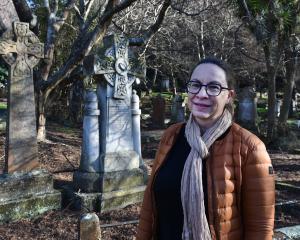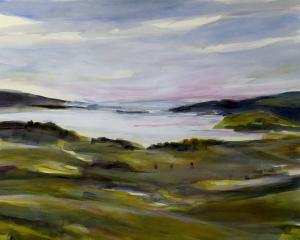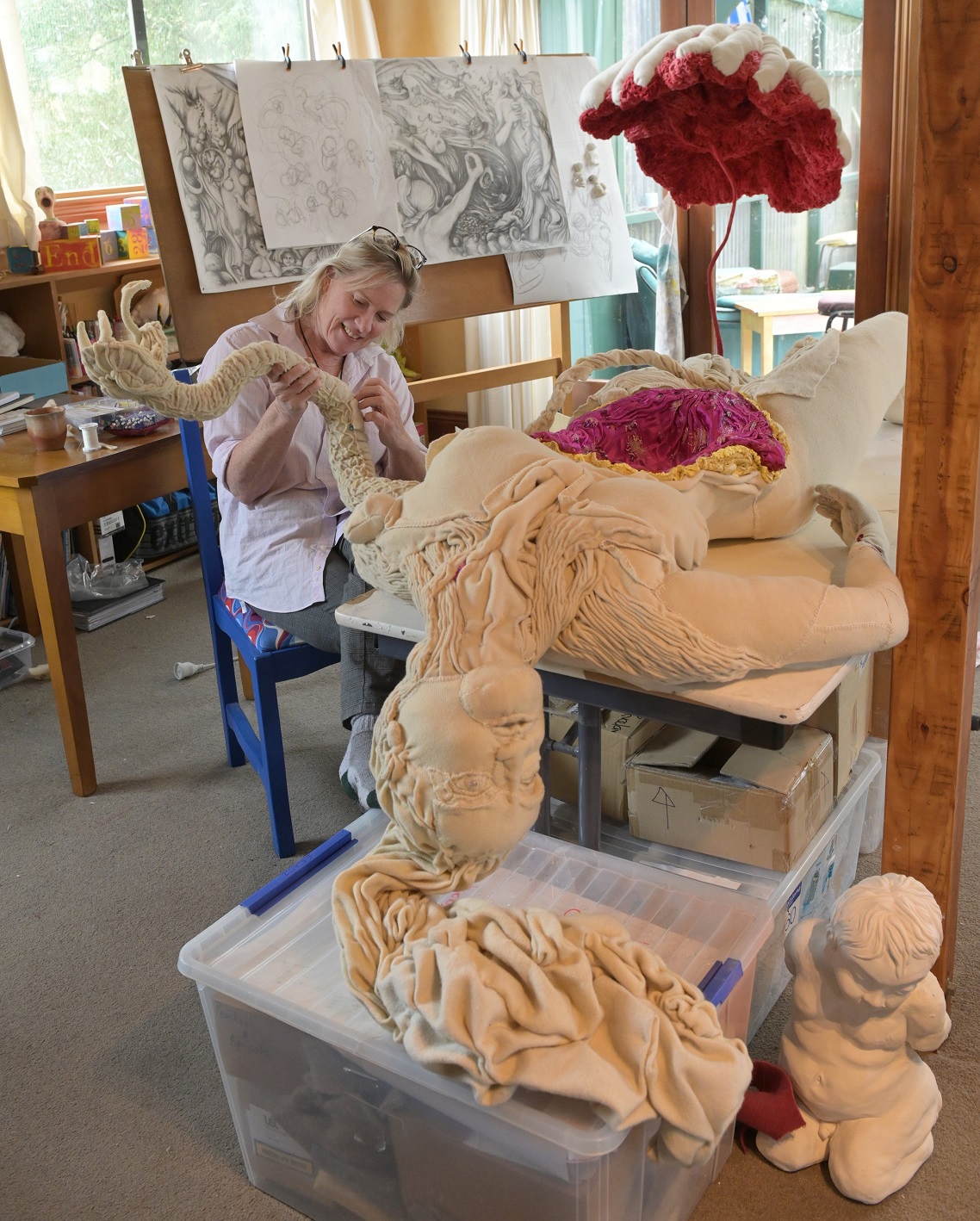
It has been "one hell of a journey" for artist Lissie Brown.
Sitting on the couch in her colourful Brighton living room surrounded by her sculptures, Brown is taking time to reflect on the past few years at Dunedin Art School while completing her master’s.
"I’m a completely different person in so many ways. It’s been tough but amazing."
Brown moved from South Waikato to Dunedin to study, taking up where she left off many years ago when she did a diploma in fine art at the art school. She also grew up in Dunedin, going to the former St Philomena’s College in South Dunedin.
"I’ve always been creative, ever since I was very young."
When marriage and two children came along, her ceramics art practice took a back seat. She travelled, did design, then teacher training and worked in art education and film props.
It was not until she visited her younger son, who was completing his master’s at the Slade School of Fine Art in London, that doing her own master’s was suggested.
"He helped me, made me write the proposal to come and do this and that’s how I ended up here. I’m very grateful to him."
She had only just arrived in Dunedin when the Covid restrictions hit and then faced struggles in her personal life.
"I knew no-one except an old school friend. A lot of things have happened. I’ve found out who I am as an artist."
Brown takes from her own personal experience to comment on the world at large through her artwork.
"This is my story, so how does it relate to other people’s stories?"
Part of that journey has been looking back into her family history, although she unfortunately found very little written about the women in her family.
What she did find indicated they were "very feisty, courageous, brave" women — a great-aunt went to art school in the United Kingdom in the late 1800s and her mother was a "Bletchley girl" working at Britain’s cryptanalyst site at Bletchley Park during World War 2.
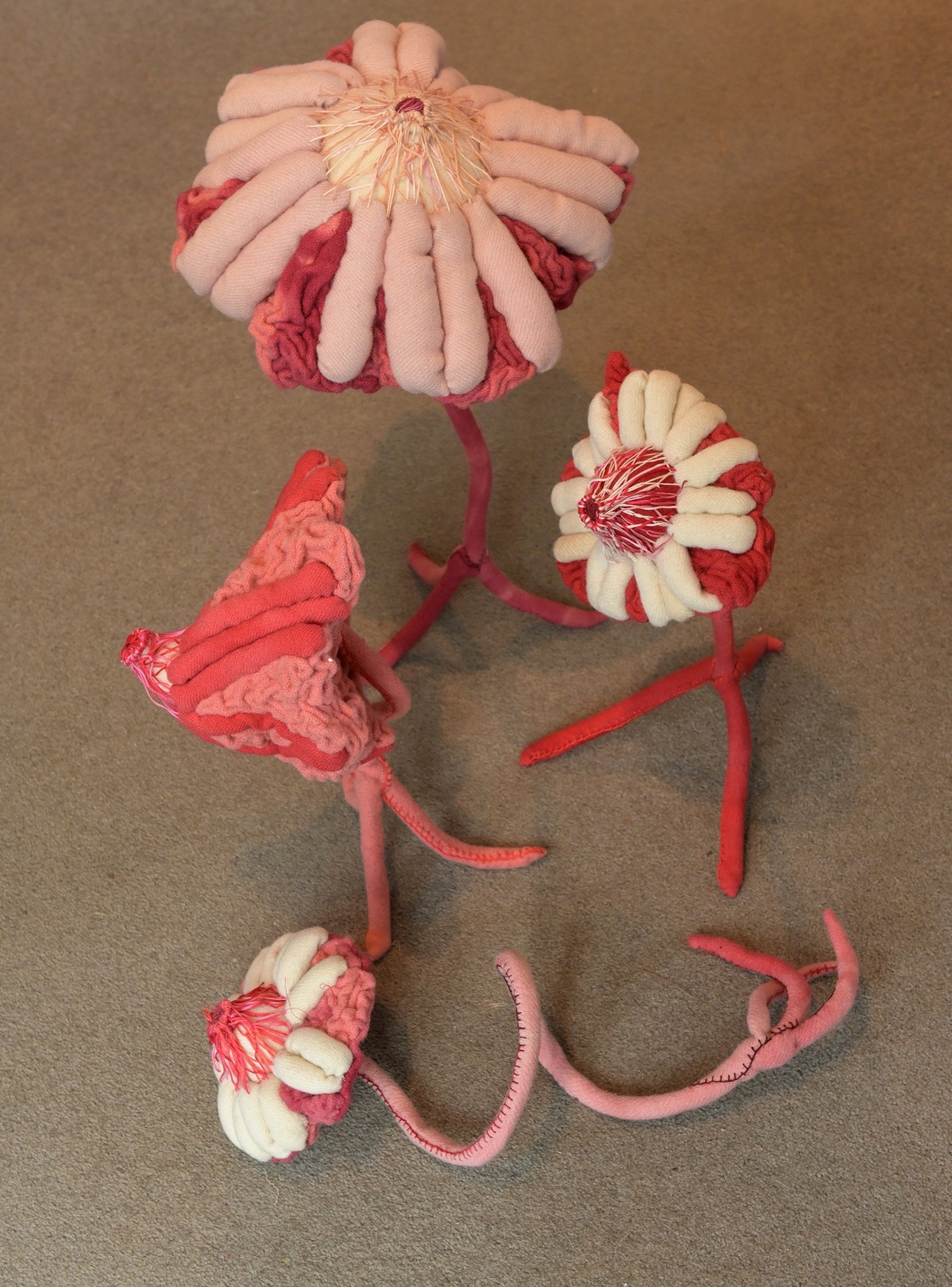
Brown always wanted to be a painter but people kept telling her she thought and looked sculpturally.
Even the photographs she took on an overseas trip were of sculpture, not painting.
"I thought maybe everyone was right. It turned out they were right — I’m very sculptural, three-dimensional. I like working with my hands."
So it is not surprising Brown, despite all the challenges, has come through with her dissertation written and only the finishing touches left to do on her exhibition.
"It’s about womanhood, intergenerational womanhood."
Another of those challenges was Covid. Lockdowns meant Brown had to move to plan B. Her concept for "Death of a Woman" looks at how society treats women, the plight of the contemporary woman and how women cope with that.
So she planned to create a sculptural female form, covering a steel armature with ceramics, but lockdown meant she could not access the materials or equipment.
Instead, she had to make do with what she had. So the form of Eve has been created out of wool blankets.
"It’s been a real journey, I started her two years ago."
Initially, she resisted the idea of using traditional women’s crafts , as she had a background in dressmaking and sewing.
"I didn’t want to go there but now I’m pleased I did, as it’s enabled me to look at it from a different perspective. I found other women who were using women’s craft non-traditionally and I went from there."
So Brown covered the armature in blankets, stuffed her and started sewing her. At first, she did her quite plainly but after encouragement from her supervisor, took Eve a step further.
Having looked at anatomical female medical wax works from the 1700s, which came apart to show their inner workings, she was inspired to add anatomical details to the female form, stitching in the muscles in the arms and legs and the breast tissue.
"Then the face [is] all beautiful with a ribbon in their hair. There was this mixed message about the medical side of a woman but she is also a pretty package to be looked at and adored by men."
A cavity in Eve’s abdomen is covered in pretty pink fabric, again referencing that idea of women being wrapped in a pretty package and motherhood.
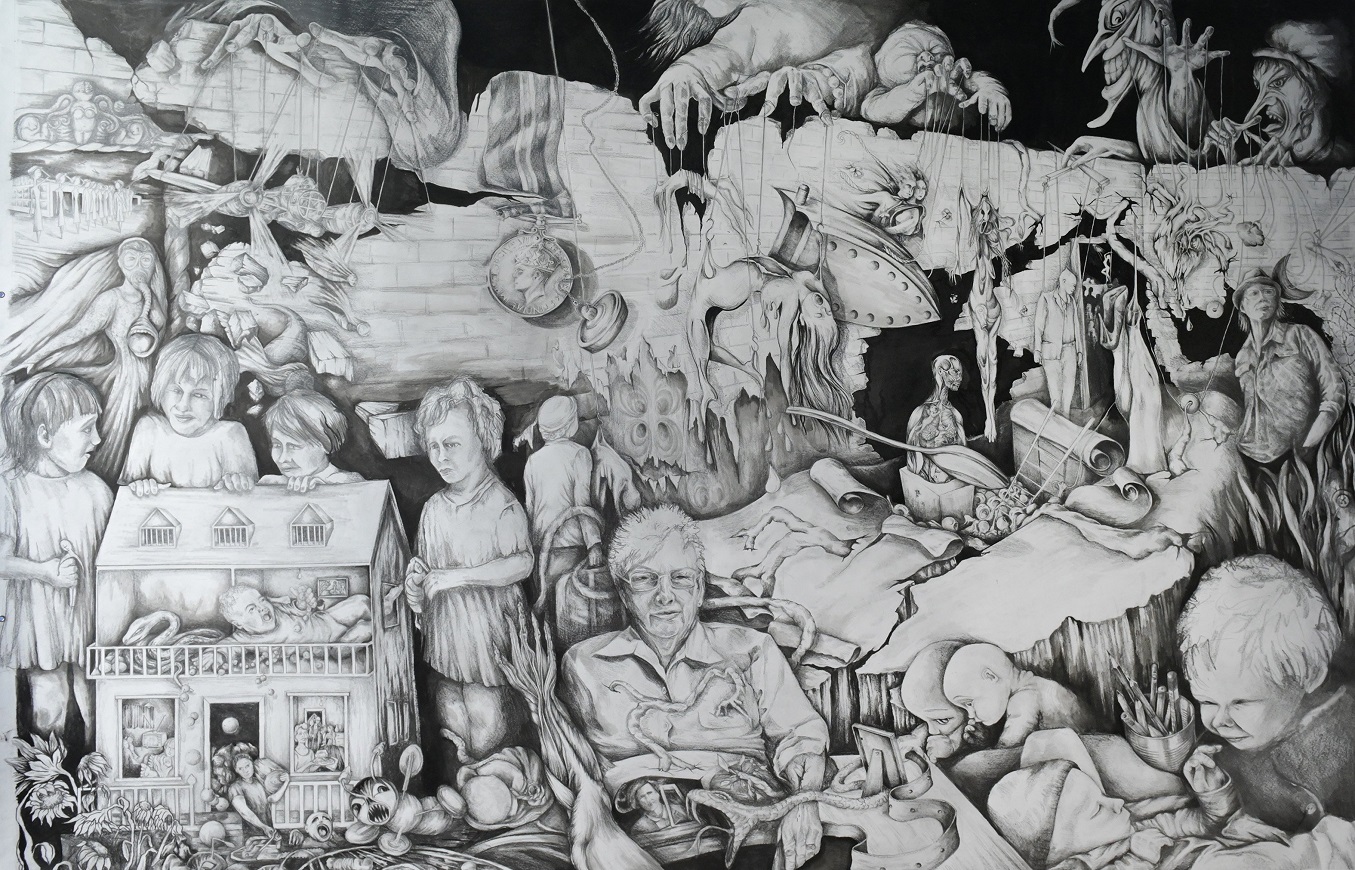
She has also created an umbilical cord, placenta and some small ceramic items.
"I’m a detail person. I like detail. It’s been quite interesting keeping the detail but going larger."
As well as her Eve, she has created breast "flowers" — "a skinned breast, basically" from blankets which she has dyed — detailed drawings of her family’s history being watched by another figure and "creepy putto" or cherubs made from paper-pulp.
"He’s like a trickster, the male [manipulator] of women."
The blanket sculptures have taken hundreds and hundreds of hours to complete. She has a rough plan for what she hopes to achieve each day, but she works intuitively, going from one project to the other to break up the work day.
"I’ll work until 2 in the morning. I’m a bit of a workaholic. I don’t really have a life."
While she has always drawn, large-scale detailed drawings are new for her.
She has completed a triptych in graphite and Indian ink featuring Brown and her mother’s stories, which has taken her a year to complete.
"It’s a new avenue. But I’ve really enjoyed doing that and I’ll continue ... It’s very raw. I need to refine it."
In the exhibition, Eve will be placed on a plinth to look as if she is floating with the umbilical cord coming out of her, surrounded by the breast "flowers", ranging in height from below knee-high to greater than human size. The large one took nearly 80 hours on its own to make, from dying the blanket to stitching it together.
"It looks a bit like a funeral, like when you walk into a church with the coffin — it talks to the deflowering of women, it’s about whatever people want it to be about."
Once the exhibition is over, Brown has a new life to look forward to. While she has been making ends meet with relief teaching and commissions, she now needs a full-time job. She would also like to tour her work.
"It’s exciting to see what’s next."
To see
"Death of a Woman", Lissie Brown, Dunedin School of Art Gallery, February 28-March 2





